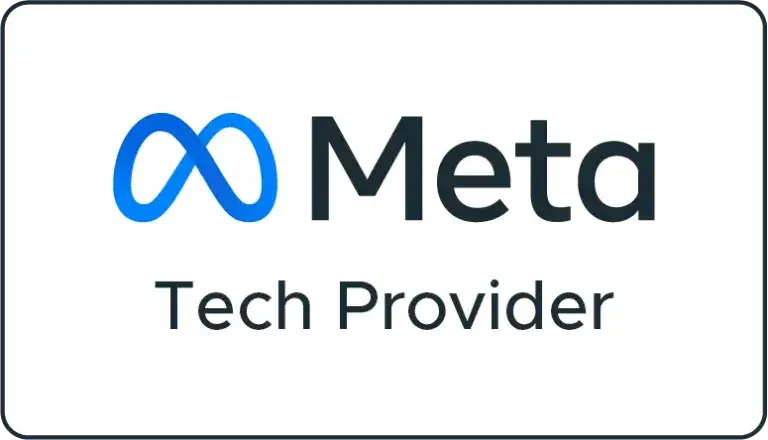Stop wasting your time adjusting bids manually in Google Ads – Google Ads automated bidding strategy is here to save the day! Forget about the struggle of manual adjustments, automated bidding allows you to leverage Google’s sophisticated algorithms to achieve the best possible bidding strategy while also saving time and increasing your advertising ROI. Automated bidding utilizes machine learning to analyze huge amounts of relevant data such as user behavior, device, location, and more in real-time. As a result, it can also apply precise bid adjustments based on the specificness of each individual auction. Whether you aim to achieve the highest number of conversions possible, target clicks, or achieve a certain ROAS: with automated bidding, it is all possible, and there is no need at all for manual bid adjustments – automation is all it takes.

Benefits Of Using Google Ads Automated Bidding Strategy
Automated bidding, which is provided by the system, offers several benefits to advertisers because bidding is a core part of Google Ads practice. For example, the system automatically customizes the bid amounts, and once again, this benefits the system helps to expand your opportunities across the network. Other benefits include:
- Saves time and effort by eliminating the need for manual bid adjustments: Since automated bidding includes the entire campaign in the strategy, the manual bid adjustments are not mandatory, and this helps to save you a lot of time. Manually adjusting your bids can be time-consuming, especially if you need to optimize some keywords or ad creative during the process or get adjusted to scaling campaigns.
- Maximize your advertising ROI. Automated bidding makes it easy to apply bidding strategies to your entire campaigns, saving you time to spend on other essential components of your marketing strategies. In conclusion, the benefits of automated bidding in Google ads are saving time, ROI improvement, and scalability.
- Allows you to scale your campaigns more efficiently. Automated bidding makes it easy to apply bidding strategies to your entire campaigns, saving you time to spend on other essential components of your marketing strategies for scaling.
To conclude, the benefits of automated bidding in Google ads are saving time, improvement in the ROI, and scaling. Although it implies trusting your bidding to Google, the system’s algorithms have been already tuned to ensure they generate the best possible performance and provide your bidding edge to remain above the competition. Different automated bidding strategies have specific goals, and many other types save much time and resources.
Different Types Of Google Ads Automated Bidding Strategies
Different types of automated bidding strategies offer different campaign goals and can offer efficient solutions. Some of the automated bidding strategies one can try on Google include:
- Maximize Conversions: This strategy is designed to try to get the highest possible number of conversion goals in your budget. It uses Google Ads’ historical data and built-in machine learning algorithms to ascertain exactly how much any given auction is likely to convert.
- Target CPA (Cost-Per-Acquisition): This bidding strategy automatically bases your bids to try and ensure you win the auction while also enabling you to drive as many conversion goals as possible, at the CPA target you set yourself. Drawing from your campaign’s historic data and using critical factors of your accounts, including the browser being used, the time of day, the operating system and the demographics, it will help to secure your whole target as long as it holds over time.
- Target ROAS (Return on Ad Spend): Target ROAS helps you increase conversion value by using your set goals. This strategy focuses on your return on ad spend and adjusts bids using statistics from your conversion goals configuration file and reports to maximize your conversion value.
- Maximize Clicks: If your primary goal is to drive as many clicks as possible with your available budget, you cannot go wrong with this bidding strategy. The way it works is simple – it bases your bids automatically according to the critical Google Ads’ historical data and machine learning in response to how likely this click is with this auction.
- Enhanced CPC: Enhanced CPC mixes manual and automated bid tactics in one strategy. It adjusts your bid automatically in real-time using the machine learning to predict their likelihood of converting them: if it estimates the conversion more likely, it will increase the bid, and it will lower in others.
Enhanced CPC mixes manual and automated bid tactics in one strategy. It adjusts your bid automatically in real-time using the machine learning to predict their likelihood of converting them: if it estimates the conversion more likely, it will increase the bid, and it will lower in others.

How To Set Up Automated Bidding In Google Ads
Setting up automated bidding in Google Ads is a simple process. Below is a step-by-step guide on how to go about it:
- Choose your campaign: It is important to note that some bidding strategies are not available for all campaign types. Therefore, ensure that the campaign you choose is compatible with automated bidding.
- Navigate to the “Settings” tab: Once you have selected your campaign, visit the “Settings” tab from your Google Ads interface.
- Click on “Bidding”: Under the “Settings” tab, click on “Bidding” to access the bidding settings for your campaign.
- Select your Google Ads Automated bidding strategy: From the bidding option, various types of automated bidding will be available for selection from a drop-down list. Choose the strategy that best suits your campaign’s objective.
- Set your bid limits: Depending on the bidding strategy you choose, it will be possible to adjust your bid limits. This mainly applies to automated bidding that adjusts CPC or CPM based on a specific target. If limit options are available, set them proportionally to your budget and goals.
- Save your changes: After making all the necessary changes, do not forget to save your new settings.
- Monitor and optimize: Ensure that you follow up on the campaign to confirm that it is making the changes according to plan.
However, just setting up automated bidding in Google Ads is not enough. You must continuously monitor and optimize your campaign to perform at its best. Review your Google Ads Automated bidding strategy regularly and adjust your bidding rules based on the data and insights provided by Google Ads.
Factors to Consider for Optimal Automated Bidding Performance
While automated bidding streamlines the bidding process, ensuring optimal performance requires attention to several key factors:
- Historical Data: Automated bidding, like any machine-learning algorithm, needs time and data to run an optimization smoothly. Have patience with your automated bidding system and keep monitoring the performance to make informed changes.
- Conversion Tracking: Ensure you have precise conversion tracking set up as automated bidding depends on the real data from the conversion tracking pixel.
- Budget and Bid Limits: While Google’s algorithms use machine learning to optimize the bidding accordingly, it does not imply full automation. Monitor results and set realistic rules to avoid overspending.
- Competitive Landscape: Improving bidding performance requires considering the competitiveness of your keywords and the industry. Review your competitors’ bids and performance metrics to make informed changes to your ads.
Best Practices For Optimizing Automated Bidding
- Start with Manual Bidding: Starting with manual bidding will allow you to understand the performance of your campaign and have realistic expectations for automated bidding.
- Segment Your Campaigns: Segmenting your campaigns based on performance metrics or target audience will enable you to tailor your bidding strategies.
- Monitor Performance Regularly: Keep track of your performance metrics such as click-through rates, conversion rates, and return on ad spend and react quickly if things start to go south.
- Experiment with Different Bidding Strategies: Feel free to test different automated bidding strategies to see which one fits your campaigns the most.
- Leverage Audience Data: Depending on the chosen Google Ads Automated bidding strategy, you might need to use audience targeting features based on user behavior or demographics.
- Combine Bidding with Other Techniques: Use automated bidding alongside ad copy testing and keyword/content optimization to enhance your approach.
Common Challenges And How To Overcome Them
Despite these strengths, automated bidding also has some exposure to the challenge. Here are several common problems and current solutions:
- Insufficient Historical Data: Not enough historical data or not enough time for the algorithm to learn: Simply, give it time to optimize your bids accurately.
- Seasonal Factors: Do not be afraid to make manual changes during seasonal peaks to remain competitive.
- Market Fierceness: A higher competitive market might require additional bid adjustments or even another strategy.
- Modification in Business Objectives: Do not forget to update your bidding strategy regularly if campaign goals have changed.
In summary, to solve such challenges requires a balanced mix between monitoring and analysis and preadaptation to flexibility. Keep an eye on your business performance metrics, submerge yourself into knowledge about your field’s recent tcb, and be ready to change anything if necessary.
Case Studies: Successful Use Of Automated Bidding In Google Ads
To illustrate the effectiveness of automated bidding in Google Ads, let’s take a look at a few case studies:
Case Study 1: Company A – Maximize Conversions
An e-commerce retailer wanted to maximize their conversions and reach their specific cost per acquisition. By implementing the Maximize Conversions bidding strategy, they were able to boost their conversion rate while reducing the cost per acquisition.
Case Study 2: Company B – Target ROAS
Case Study 2 focuses on Company B that wanted to maximize the return on ad spend. The organization used the Target ROAS bidding strategy to optimize their bids based on the predicted conversion value. Therefore, their ads were displayed to users most likely to convert, which contributed to higher return on ad spend. Company B was able to achieve their target return on ad spend and still effectively control their spending.
Case Study 3: Company C – Maximize Clicks
Company C – Maximize Clicks In Case Study 3, Google’s ad bidding helped Company C, a content publisher, receive as much traffic to their website as possible. The company implemented the Maximize clicks strategy in Google Ads Automated bidding strategy, which contributed to a significant growth in traffic based on the automated bidding algorithm raising their bids to win as many clicks on ads as possible.
These examples illustrate the potential of automated bidding to accomplish specific campaign goals. Google’s algorithms possess the capacity to bid on the platform for the optimal performance of the campaign results.
Tools And Resources To Enhance Automated Bidding Performance
- Google Ads Recommendations: Utilize personalized recommendations for bid optimization.
- Google Analytics: Combine with Google Ads for better understanding of user actions.
- Google Ads Auction Insights: Identify performance gaps compared to competitors.
- Google Ads Experiments: Test different bidding strategies to find the most effective one.
- Industry Benchmarks: Use industry benchmarks to set realistic performance goals and identify areas for improvement.
These tools and resources will help optimize automated bidding performance and achieve better results with Google Ads.
Conclusion: The Future Of Automated Bidding In Google Ads
Automated bidding makes bid management and optimization easier in Google Ads. Automated bidding will provide you with advanced strategies and optimization, and automated bidding will become more advanced as technology advances. Advertisers that take advantage of automated bidding will outperform their digital advertising competitors and ad campaigns by accomplishing more and achieving their objectives in a shorter period. Use the power of automated bidding to take your advertising to a new level!













